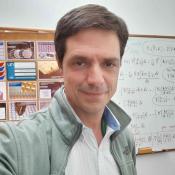Microwave seminar | 18 December 2023
Room 2530 + Online

In this talk, we will explore the development of nanoantennas designed to operate effectively in a wide range of infrared frequencies. To achieve constant input impedance, we propose using self-complementary nanoantennas composed of a high-permittivity dielectric and plasmonic metal. In this paper, we present a breakthrough approach to restore the applicability of Babinet's principle in some scenarios. Our findings demonstrate that by carefully tailoring dimensions and materials, specifically employing silicon and silver with an optimal thickness of 12.7 nm, we can achieve nanoantennas with input impedance near 188 Ohms at least within the range of 50 to 300 THz. This innovative approach may allow for easier impedance matching of the nanoantenna with the feeding waveguide or source. In addition, other key characteristics will be shown, such as total efficiency and radiation patterns.
[1] J. D. Ortiz, J. P. del Risco, J. D. Baena, R. Marqués, “Extension of Babinet's principle for plasmonic metasurfaces,” Appl. Phys. Lett., vol. 119, p. 161103 (2021). Link
[2] J. D. Baena, S. Asadulina and J. P. Del Risco, "Plasmonic Self-Complementary Spiral Nanoantenna With Constant Input Impedance," 2023 Seventeenth International Congress on Artificial Materials for Novel Wave Phenomena (Metamaterials), Chania, Greece, 2023, pp. X-028-X-030, doi: 10.1109/Metamaterials58257.2023.10289163.
